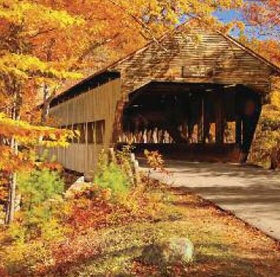Although most people don’t enjoy having to dispose of all the falling leaves, Autumn is a difficult season to dislike. Before becoming a chore, those same leaves morph into brilliant splashes of color and combine with crisp, sunny days and chilly nights to create a time of year that’s almost magical.
In our area of the Midwest there are a lot of forested hills and valleys that not only provide a gorgeous view for the locals, but also draw a lot of visitors from outside the area. In addition to the leaves, a big part of the attraction for outsiders is the multitude of covered bridges in the area, because even though they’re very popular year-round they are especially attractive when surrounded by Autumn colors.*
also draw a lot of visitors from outside the area. In addition to the leaves, a big part of the attraction for outsiders is the multitude of covered bridges in the area, because even though they’re very popular year-round they are especially attractive when surrounded by Autumn colors.*
Covered bridges were a common part of the landscape all over the country for many years and a lot of them still survive, but there is a misconception about the reasons behind putting a roof on the structures. The popular legend is that people riding in buggies could find shelter during rain or snow storms — and lovers could find a little privacy.
The real reason is much more practical if not as poetic. The structure of most small rural bridges was mostly wood, and the roof helped keep moisture from slowly rotting the boards. It made a real difference; uncovered bridges might only survive 10 years or so, while those with covers were good for at least 80 years — and as we now know, even longer in some cases.
*(Note: it was difficult to find a good Autumn bridge video but I included the one below, which features outstanding photos of bridges even if they appear to have been taken in the Spring.)
 Erroll Garner – “Autumn Leaves”
Erroll Garner – “Autumn Leaves”
Sweeping up leaves is not much of a problem round these parts (Australia) in Autumn as most of the trees are evergreens. Alas, that isn’t so in my street as some bright spark, about 100 years ago, planted plane trees all along it so sweeping is required. I’ve found out that their leaves only rot down when under snow and ice. There’s a distinct lack of snow and ice in my street (and city).
I’ve had the pleasure of being in Massachusetts in Autumn. I was gob smacked at the beauty there (and New Hampshire and other states in New England).
LikeLike
You mentioned leaves rotting under snow and ice — since I’m not the friskiest person around when it comes to cleaning up my leaves, a lot of them will be disappearing later under ice and snow too. But I prefer to think of it as nature’s fertilizer. 😉
LikeLike